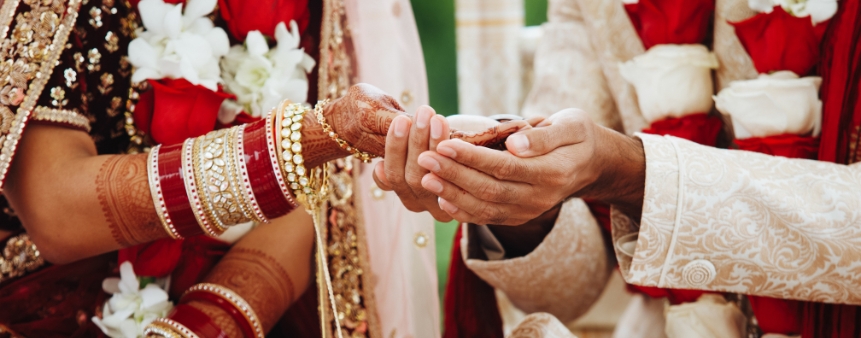Talk to India's best Astrologers
First Consultation at ₹1 only
Login
Enter your mobile number
The Indian groom or Dulha, particularly in north Indian weddings, has different names in other regions and cultures of India. In southern cultures of India, like Tamil, the groom is known as Mapillai; in Telugu, he is called Varudu; and in Malayali, he is known as Manavalan. He is called Dora in Assamese weddings and Bor in Bengali traditions in the east. In the west of India, the groom is known as Vararaja in Gujarati and Vadhu in Marathi.
Traditionally in Hindu weddings, there aren't any groomsmen around the groom. Although in Christian weddings in India, a group of groomsmen stands beside the groom throughout the wedding ceremony.
At a wedding, the bride and groom are considered to be the show's stars, and their role is crucial in all the wedding rituals. The groom is believed to be Lord Vishnu's avatar, and several rituals and customs are dedicated to him. The groom vows to take care of his bride and takes the role of protector. Even while taking the seven pheras or rounds around the holy fire, the groom promises to love, cherish, honour, and respect her.
Here are some of the acts performed by the groom in a classic Indian wedding:
Tying of the Mangalsutra
The groom is the one who ties the Mangalsutra, or a black bead necklace, around his wedded wife's neck. He also applies sindoor or vermillion to the hair parting of the bride, and this is the symbol of her marriage. It is said that after the groom ties the Mangalsutra, the couple's bond strengthens, and they form an eternal connection.
Applying Sindoor or Vermillion
He also applies sindoor or vermillion to the hair parting of the bride, and this is the symbol of her marriage. In some cultures, it is considered that if the sindoor that the groom is applying to his wife falls on her nose, he will love her endlessly and in every lifetime.
The attire of the groom varies from culture to culture. In most Hindu weddings, the groom wears traditional clothes of his culture for the various rituals. On the wedding day, he wears a Sherwani Churidar or Kurta Pyjama or Jodhpur suits, Pathani coats or cultural wedding attire.
A Sherwani is an embellished long jacket worn along with fitted trousers known as Churidar.
Like in south Indian weddings, the Hindu groom wears a white dhoti having a golden border. However, in most Hindu weddings, it is common for the groom to wear a Sehra or headgear. A Sehra is often heavily decorated with gold, jewels, flowers, and strands of pearls. This headgear varies throughout the country, and its choice of use is at the discretion of the groom's family.
In Punjabi Sikh weddings, the groom carries a sword, called a Kirpan, throughout his wedding procession or Baraat.
It may seem problematic to figure out what to give a bridegroom, but it's pretty simple. It is known that men love their digital accessories, gadgets, and even grooming kits. So if you are looking for a perfect wedding gift for the groom, you can think of gifting classy colognes, a beautiful watch, bar accessories, video games, grooming kits, or even gadgets like a laptop, a camera, or an iPad.
